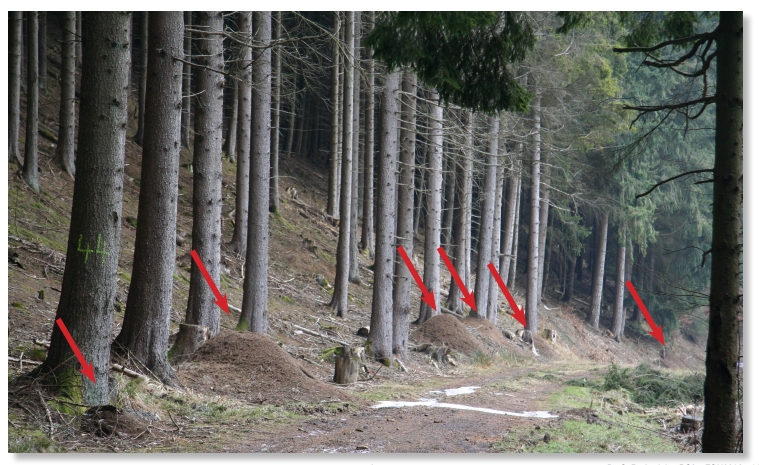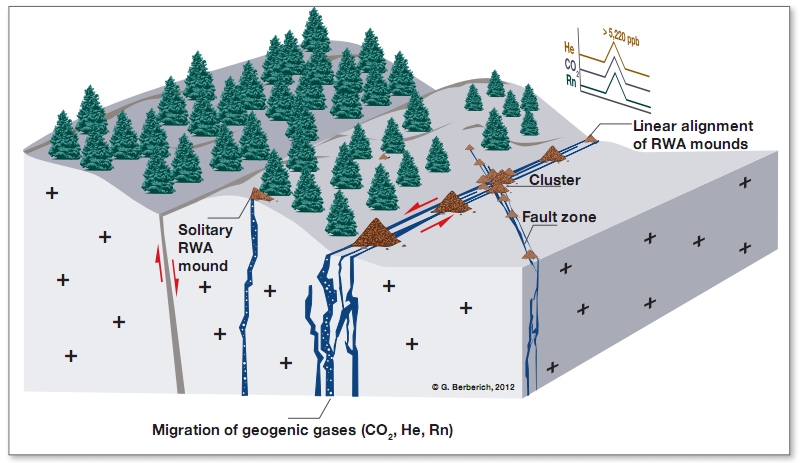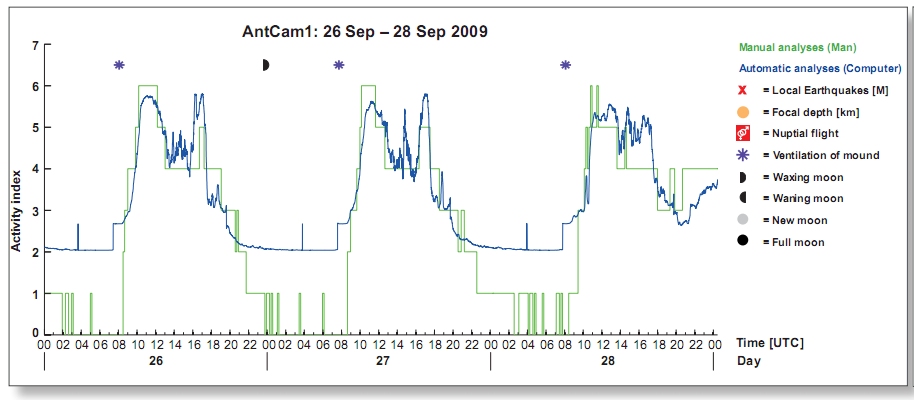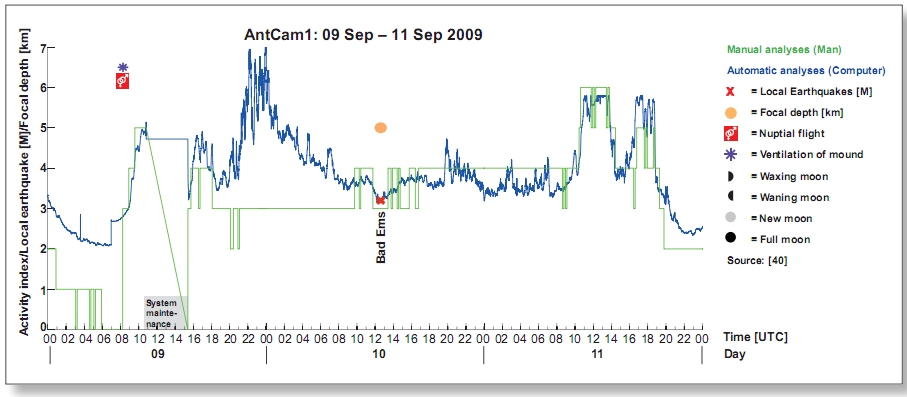A recent paper linking red wood ant behaviour to earthquakes has been widely reported but not widely discussed. Such discussion and comment as there has been in the media has focused on the mechanism/s by which these ants might predict earthquakes. I believe that there is an important question to be addressed which may help explain the evolution of quake-detection mechanisms. Given that these ants seem to prefer to build their colonies along active faults, I suggest that the question to be addressed is: "why would any creature build its home on an active fault line?"
A study of ant behaviour was made public at a press conference on Thursday, 11 April, 11:00 at the European Geosciences Union. The conference session, PC9, was entitled "Precursors: the search for alternative earthquake prediction methods."
Preliminary results of the study show that red wood ants (Formica rufa) may be able to predict earthquakes.
"For three years (2009–2012), two red wood ant mounds (Formica rufa-group), located at the seismically active Neuwied Basin (Eifel, Germany), have been monitored 24/7 by high-resolution cameras. Early results show that ants have a well-identifiable standard daily routine. Correlation with local seismic events suggests changes in the ants’ behavior hours before the earthquake: the nocturnal rest phase and daily activity are suppressed, and standard daily routine does not resume until the next day. At present, an automated image evaluation routine is being applied to the video streams. Based on this automated approach, a statistical analysis of the ant behavior will be carried out."Text source: Early Results of Three-Year Monitoring of Red Wood Ants’ Behavioral Changes and Their Possible Correlation with Earthquake Events
"Short-term earthquake predictions with an advance warning of several hours or days are currently not possible due to both incomplete understanding of the complex tectonic processes and inadequate observations. Abnormal animal behaviors before earthquakes have been reported previously, but create problems in monitoring and reliability. The situation is different with red wood ants (RWA; Formica rufa-group (Hymenoptera: Formicidae)). They have stationary mounds on tectonically active, gas-bearing fault systems. These faults may be potential earthquake areas. For three years (2009–2012), two red wood ant mounds (Formica rufa-group), located at the seismically active Neuwied Basin (Eifel, Germany), have been monitored 24/7 by high-resolution cameras with both a color and an infrared sensor. Early results show that ants have a well-identifiable standard daily routine. Correlation with local seismic events suggests changes in the ants’ behavior hours before the earthquake: the nocturnal rest phase and daily activity are suppressed, and standard daily routine does not resume until the next day. "
Gabriele Berberich , Martin Berberich, Arne Grumpe, Christian Wöhler and Ulrich Schreiber.
http://www.mdpi.com/2076-2615/3/1/63
The following images are from the press release.

Mounds and trees.
This image shows some of the mounds made by the red wood ants along a fault line. Note in particular the tree stumps.

Migration of gases.
This graphic shows that the ant's mounds are located on a fault line from which gases may be emitted.

Normal ant behaviour.
When there is no seismic activity above about M2 the ants behaviour is normal.

Abnormal ant behaviour before and after a local earthquake.
A seismic event above about M2 triggers abnormal ant behaviour before and after the event.
Life and death on an active fault line
All living things need resources. In the case of the red wood ant the major resource required is wood. It's a wood ant. It thrives where there is an abundance of wood. But not any wood. The wood must be dead. Any search of the scientific literature for earthquake + trees will supply a wealth of papers detailing the damage that earthquakes cause to trees. Apart from the physical damage to roots, trunks and branches from shocks, it is not widely known that CO2 kills plants by suffocating the roots, which like us require oxygen. An active fault line in a wood or forest will be a rich environment for any living thing that thrives on dead wood. But with provisos.
Any living thing which can thrive on an active fault line which emits CO2 must either be tolerant of that gas or must be able to move far enough away not to be affected. Although the ability to detect CO2 has survival value in this situation, and ability to predict a precursor of the CO2 would be of greater value.
"Red wood ants are also able to react on minor changes of temperature rises. Probably they are also able to record acoustic, electro-magnetic and micro-seismic signals coming from the deep crust."
Source: uni-due.de
Evolution and earthquakes
It would be interesting to know the sequence in which the various sensory devices of these ants evolved. Analysis of the DNA could help here. I suggest that the reverse sequence of modification would reveal the sequence in which the ants' sensory systems analyze the data. Consider first the ability to sense CO2. That alone is not enough. Any drone deep in the mound would probably not survive long enough to escape into the open air and pass on its genes. Any other factor making a drone more likely to emerge would be passed on. Thus, the genes for CO2 awareness would, I suggest, be optimized before the genes responsible for 'quake awareness'.
The ants' quake sensing abilities could be due to an enhancement of any factor, but I suggest that the most important factor is likely to prove to be the ability to analyze vibration signals. Can these little geniuses perform Fourier analysis? Ants have been shown to communicate using vibrations. Have the red wood ants developed an ability to "read" the sounds of an impending quake? And do carpenter ants prefer homes on an active fault line? Further research will no doubt tell.
Please discuss.





Comments